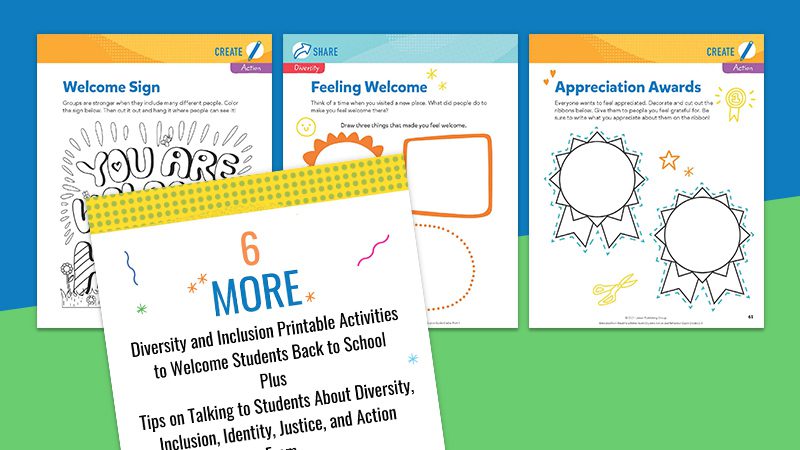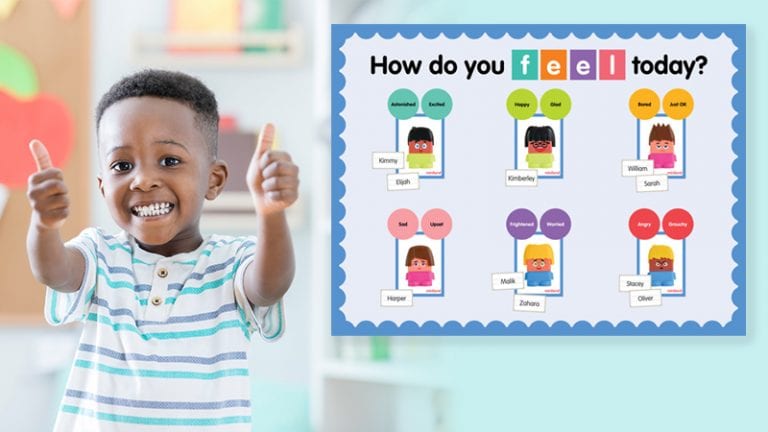We all know that the first days of school lay the foundation for the entire year. As educators, one of our immediate goals is to make sure that all of our students from various cultures and backgrounds feel included and supported in our classroom, so they are ready to learn. To welcome students back to school, here are six printable diversity and inclusion activities from Read for a Better World, a new classroom literacy collection that includes books, lessons, and activities designed around the themes of identity, diversity, justice, and action.
1. Puzzle Pieces of Me (Pre-K-1)
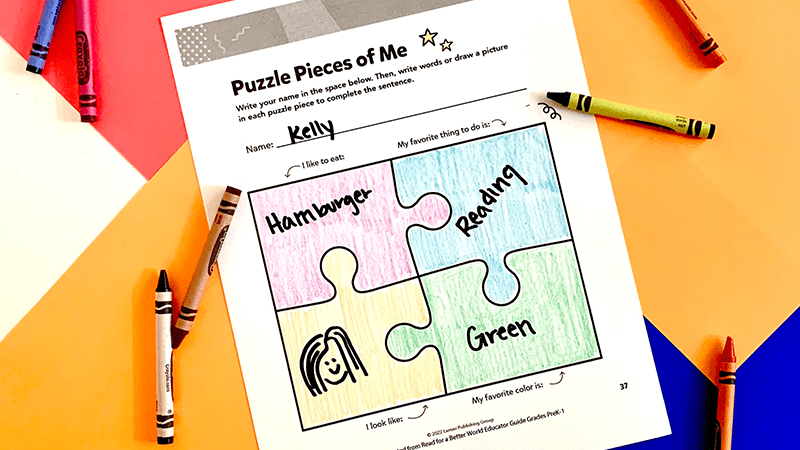
This activity uses identity as a theme. It is based on the idea that the collection of all the little things you do makes you who you are. Part of your identity is made up of things you like to do. The puzzle pieces in this activity encourage self-reflection and group discussion. This is another way for students to share more about who they are as you welcome them back to school.
How it works: Have students write their names at the top of the page. Then, in each puzzle piece, have them draw a picture of what they like to eat, their favorite thing to do, what they look like, and their favorite color.
Get printable: Puzzle Pieces of Me
2. Family Portrait (Pre-K-1)
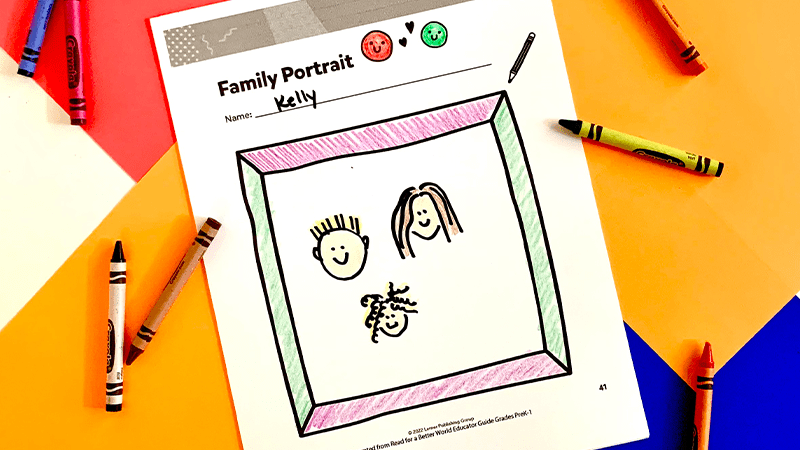
Much of a child’s early worldview is shaped by caregivers and family members. A student’s identity is influenced by those adults in their lives, and this activity gives them a chance to share their families with their classmates. You can encourage them to include family members that aren’t biologically related to them. Ask them key questions such as: What makes a family? What are some of the ways family members support each other?
How it works: Have students draw a picture of their family. Then answer some questions about their families. For example: My family takes care of me by… I help my family by… I show my family I care about them by…
Get printable: Family Portrait
3. Classmate Interview (Grades 2-3)
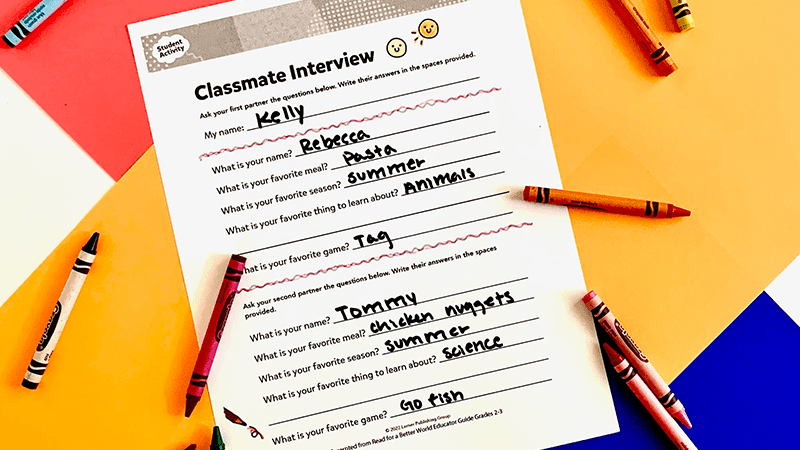
This activity helps students discover all the many ways they are the same and how they are different from one another. It establishes that our identity makes the world a more interesting and beautiful place despite differences. And it helps students find how much they have in common. Additionally, this activity is designed to build empathy by actively learning about others.
How it works: Start off by talking about the general ways we are all different from one another and how we’re the same. You can write the student’s answers on a dry-erase board. Then have students pair off and interview each other. Have the students take turns asking each other the same four questions included on the activity sheet.
Get printable: Classmate Interview
4. Shaped by Place (Grades 2-3)
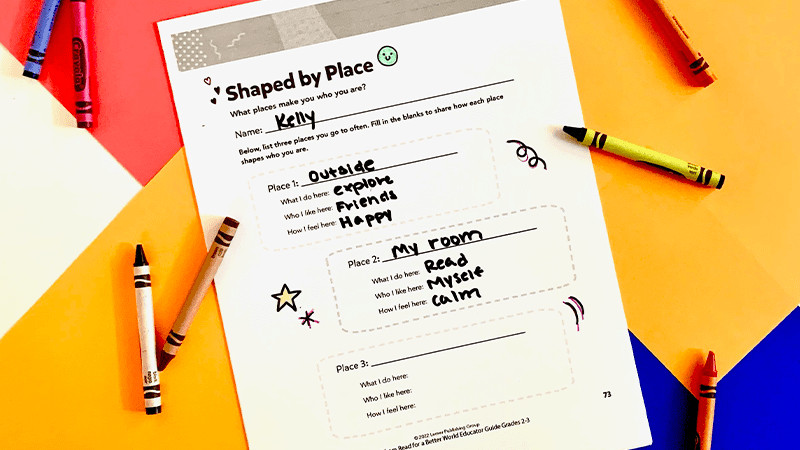
This activity explores the importance of place and setting in making us who we are. This helps students understand some of the ways people are shaped by where they live. This can be an opportunity to reflect on how the places in which they spend time help to inform who they are.
How it works: Focusing on the idea that a place makes you who you are. Have students answer these three questions three times: What do I do here? Who do I like here? How do I feel here?
Get printable: Shaped by Place
5. Outer Me, Inner Me (Grades 4-5)
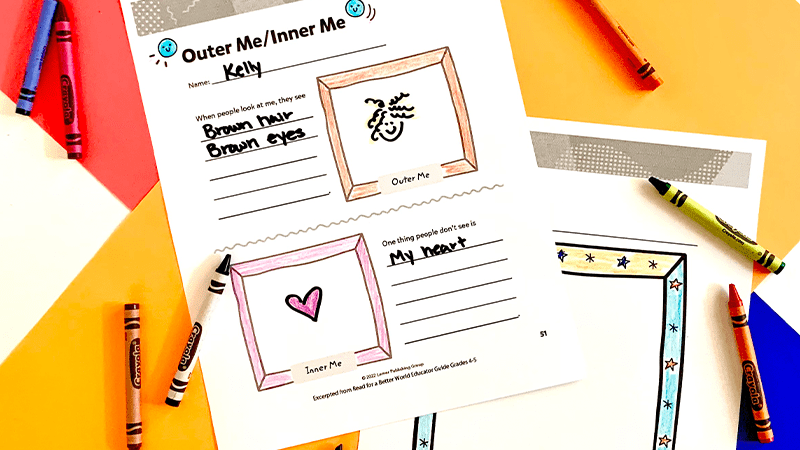
This diversity and inclusion activity is great for welcoming students back to school as it invites them to explore identity and their inner and outer selves. Ask students to think about the feelings they have inside and the identity they share with the world. Remind students that identity is something that people can see, and there are parts of themselves that are hidden.
How it works: Ask students to draw a realistic self-portrait. They could bring a photo into class and work off of that. Ask students to draw the photo based on what they think people see when they look at them. This would be the “Outer Me.” Using the worksheet, students answer questions about themselves such as: When people look at me, what do they think? My friends would say I am…?
Then ask students to draw a self-portrait of themselves based on what people don’t see when they look at them. They can answer questions such as: One thing people don’t know about me is… I think I am…
Get printable: Outer Me, Inner Me
6. My Media (Grades 4-5)
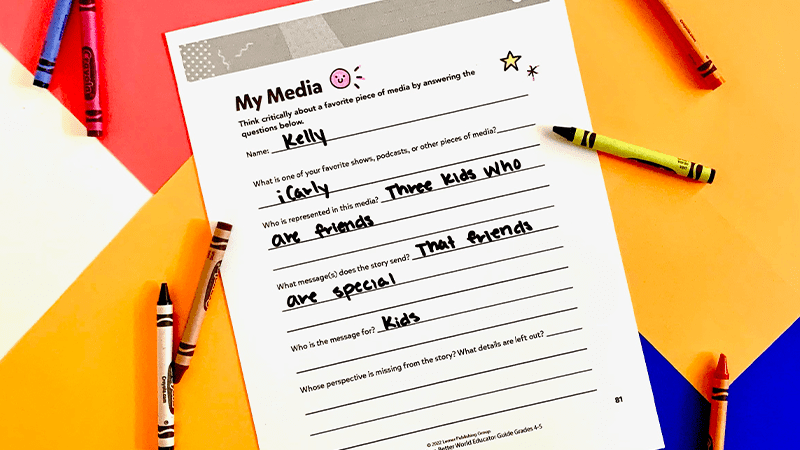
This activity helps students to begin thinking critically about diversity and representation in what they watch. They begin to understand the importance of fair and accurate representation in films and TV. Ask students to think about whether or not the shows they watch represent a diverse community of people. You can take this opportunity to talk about the history of American film and television. How Black characters were once played by white actors in “Black face.” Challenge students to think about their responsibility in what they watch and how they might change it.
How it works: Have students answer questions about what they watch, focusing primarily on the characters. The students will explore how the characters are like them and how they’re different. They ask themselves if the character is likable and to describe how they behave.
Get printable: My Media
Want 6 more diversity and inclusion printable activities?
Help your students grow as readers and people with 6 more diversity and inclusion printable activities + tips on talking to students about diversity, inclusion, identity, justice, and action from Read for a Better World. It’s a new literacy collection for grades Pre-K to 5 that includes classroom libraries of authentic and culturally relevant texts. Just fill out the form to get your free printables.

